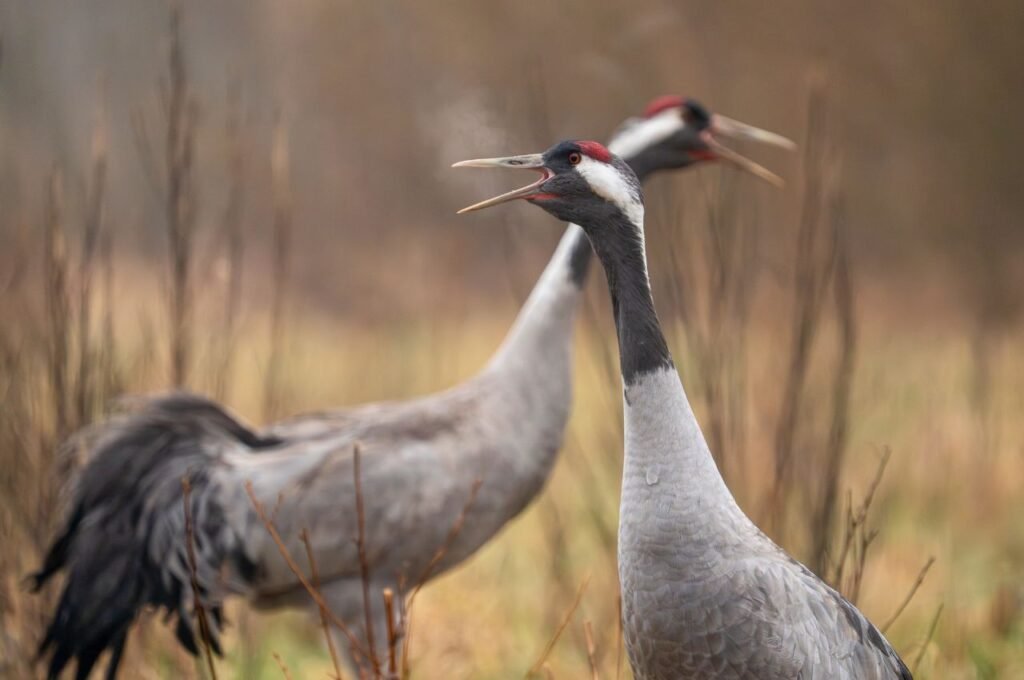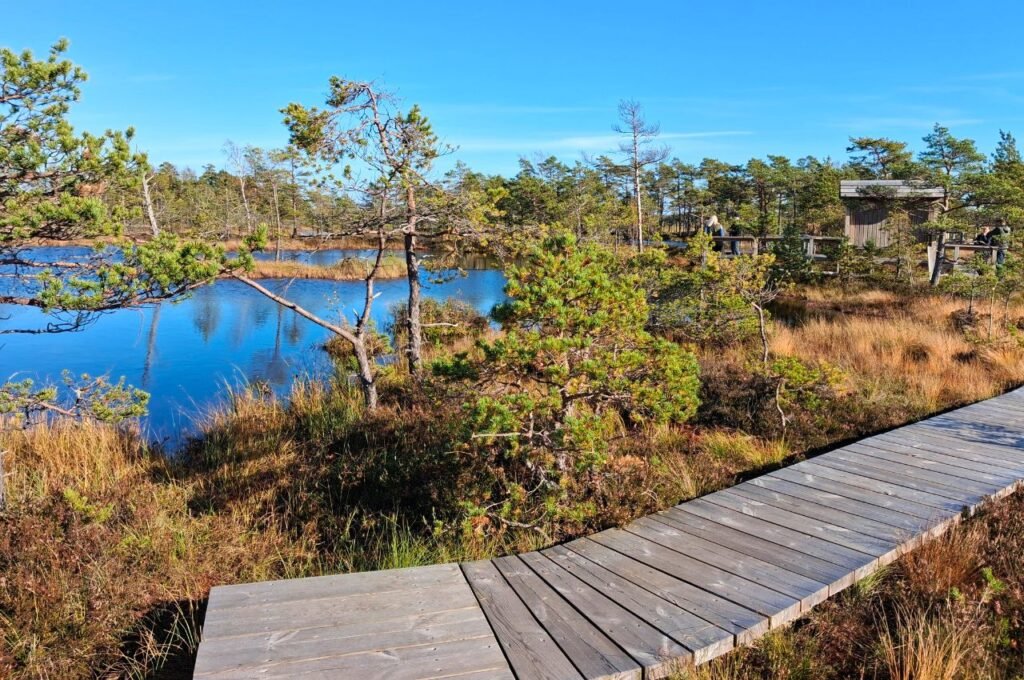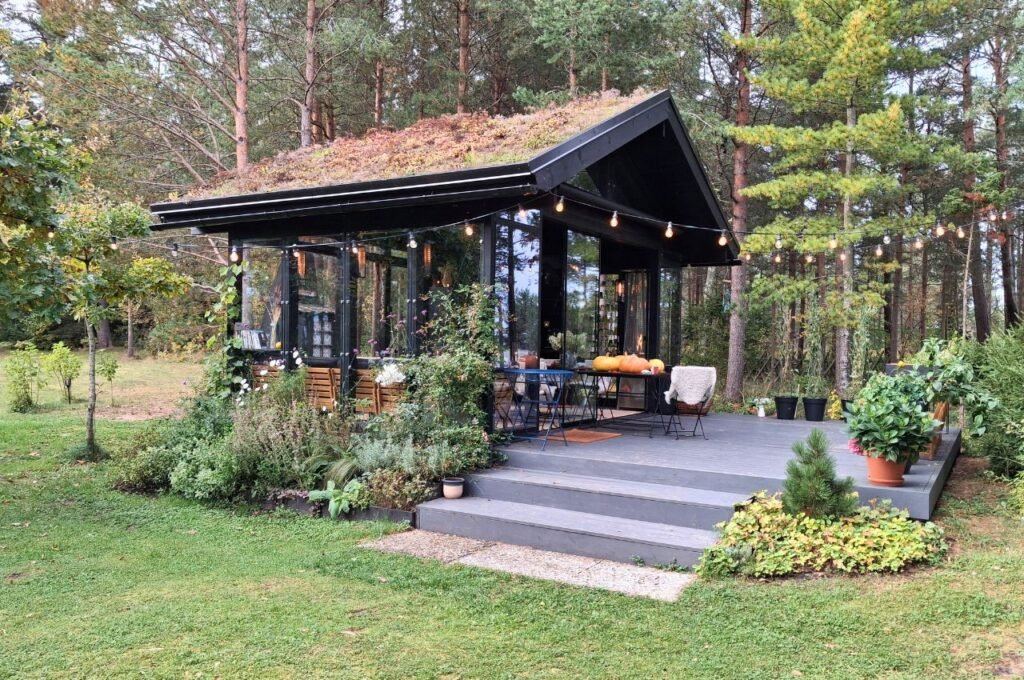A short hop away, Estonia and Latvia offer a great chance to mix amazing wildlife with a fascinating culture and cuisine.
The Baltic States of Estonia and Latvia are decidedly overlooked for a short-haul European escape, yet they are secretly brimming with opportunity. However, if you are keen to witness wildlife on your travels and would like to mix this with fascinating local culture and history, then you should consider them as an option.
These two countries offer immense pleasure for the short journey. Not only are they only a two-and-a-half-hour flight away, but they still hold vast, whispering tracts of native forest, and their coastlines hold some of the most spectacular bird migration sights you are ever likely to see.
Wildlife Spectacles

If you are visiting to see the birdlife, the air-charged drama of spring migration is the best time to visit. Over sunny autumn days, we travelled from Tallinn to Riga, following migration corridors, coastal life, forests, and peat bogs across Estonia and Latvia.
Every spring and autumn, thousands of songbirds, waterfowl, and raptors pass through the coastal regions. It’s not just the range of species you can see but also the sheer number of birds in a flock.
At the tip of the Puise Peninsula, we visited the free observation tower overlooking a variety of coastal habitats. We had missed the Common Cranes soaring departure, but a flock of 200 Brambling and 950 chaffinch swirling and glittering against the sun is usual for this time of year!
Located on Estonia’s southwest coast, Kabli Bird Station is one of the best places in the Baltic region to witness bird migration up close. The station is known for its long-running ringing and monitoring programme, where you can learn about bird migration, scientific research, and conservation. The team working there show you what they have trapped and how they ring and track an individual bird’s progress.
Fascinating Coastlines

Estonia has literally hundreds, if not thousands, of offshore islands and, along with Latvia, some stunning beaches. We took a boat trip out, cutting through some of the islands and saw Grey Seals, massive flocks of Long Tailed Ducks, White Tailed Sea Eagles and many other sea birds, but unfortunately, we were too early to spot Steller’s Eider, a bird I have long wanted to see.
One of the musts is to try an e-bike tour along the Latvian beaches and deep into the forest, where you can feel the cool Baltic wind whip past as you glide through the woods. Long tours teach you about the forest’s secrets and even stop to make refreshing, herb-infused, non-alcoholic cocktails along the way!
The traditional cuisine of the Baltic States is delicious, emphasising local ingredients such as fresh fish, earthy potatoes, rich dairy, and the potent flavours of foraged foods like mushrooms and berries. There are many small restaurants/guesthouses a short walk from the shore where you can eat al fresco under the stars with only the sound of the waves lapping on the beach to keep you company.
Be also sure to try Baltic Herring, often pickled or smoked, served with black rye bread and butter. The smoked fish dishes have a rich, intense flavour, making them well worth trying.
Capital Culture

Although my trip was focused on wildlife, I highly recommend exploring the two capital cities, so different yet equally captivating and alike. Tallinn, you will feel the weight of the centuries in its towering medieval walls, whilst the Art Nouveau architecture in Riga makes up roughly one-third of all buildings in the centre, making Latvia‘s capital the city with the highest concentration of Art Nouveau architecture anywhere in the world.
To fully absorb their magnificent architecture, it’s best to walk around them at dawn, when the sun bathes them in early morning light and the streets are deserted. Then, later, when the vibes of everyday life transform them into living and breathing entities.
Forests and Peat Bogs

Estonia and Latvia both have National Parks that hold vast, silent tracts of original European forest still inhabited by Brown Bear, Lynx and Wolves. For a fleeting split second, I was lucky enough to see a Lynx, a ghost of the woods, as it walked between the trees, something I won’t forget in a hurry.
The birdlife is fantastic, with some stunning woodpeckers and the larger owls such as the Eagle, Ural, and Great Grey Owl.
The parks also contain large areas of Peat Bogs that you can either walk through using extensive, buoyant snowshoe-like footwear or walk above on raised wooden pathways, depending on how close you would like to get to nature!

We visited Tolkuse Bog, a raised peat bog in southwestern Estonia, located within the Luitemaa Nature Reserve. It features a 2.2 km boardwalk trail and an observation tower, providing access to typical bog landscapes and opportunities to observe wetland vegetation and bird species. There are a couple of steep climbs and descents on the walkway, but it is an incredible experience nonetheless.
You can also experience a small boat ride amongst the extensive reedbed systems where Bitterns, Bearded Reedlings and Beavers make their home.
I’ve only scratched the surface of the wildlife spectacles of Estonia and Latvia. The people are extremely friendly, and the combination of wildlife and culture is a real bonus. Plus, nearly everybody speaks English and is keen to learn!
Both countries are still off most people’s radar and are not visited that much. I have a feeling that is going to change quite quickly, so go while you can.
Useful websites
Baltic Nature Tourism https://balticnaturetourism.com/en
Latvia https://www.latvia.travel/en
Estonia https://visitestonia.com/en
If you are passionate about hiking in the wild, check out our Naturalist Journeys page to discover other exciting destinations.
Share this article

Steve Newman
Steve Newman is a former primary school teacher who gave it all up to become a freelance travel writer and photographer. When he’s not exploring the world, reviewing hotels or interviewing fascinating people, he’s birdwatching in the hills and on the beaches of his beloved Northumberland.